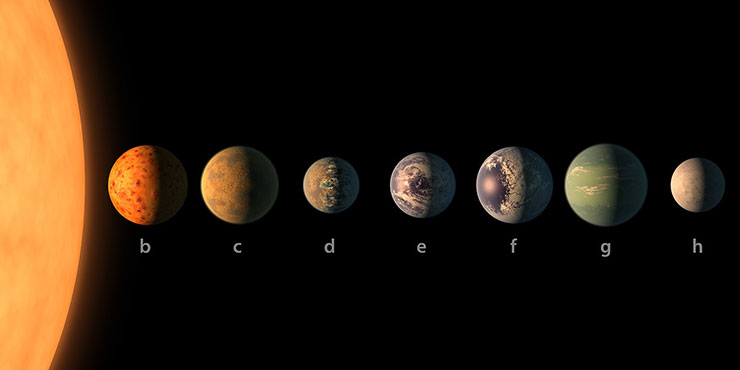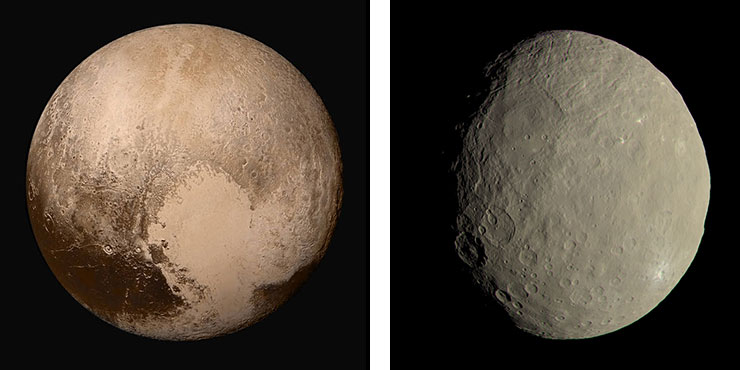Exciting news revealed yesterday that NASA scientists discovered a new planetary system with seven rocky planets which have the potential to be habitable zones—that means that conditions imply they main contain water which is considered the essential element for life.
These Earth-sized planets are 39 light-years away and orbit a Dwarf star called Trappist-1. The planets do not rotate in orbit like the Earth but one side of each planet always faces the light and the other side is in constant darkness.
Trappist-1 isn’t like our Sun—it is 10-times smaller and about 2.5 times cooler.
There are a multitude of reasons why life may NOT exist here and there another 100 billion stars in our galaxy that we know nothing about but this discovery excites astronomers and star gazers everywhere. What scientists need to do now is keep it in their telescopes and watch what happens.

Read on for NASA’s explanation of dwarf planets:
Dwarf Planets: What are they?
By Linda Hermans-Killam
By the name, you might think that a dwarf planet is just a small planet. But that’s not quite true!
Like planets, dwarf planets have a rounded shape and orbit our sun. They don’t orbit anything other than the sun, so they’re not moons. However, there is one major difference between planets and dwarf planets: dwarf planets have not cleared other objects out of their orbits. This means they share their orbits with other things, such as asteroids. They don’t have enough mass to knock these objects out of the way.
So far, there are five known dwarf planets in our solar system: Ceres, Pluto, Haumea, Makemake, and Eris.
The smallest and closest to Earth is Ceres. It’s the largest object in the asteroid belt, which lies between Mars and Jupiter. In 2015, NASA’s Dawn mission went into orbit around Ceres. It took many thousands of photos and mapped the dwarf planet’s surface. Ceres is made up of rock and ice and salt. It is the only known dwarf planet without a moon.
Pluto is the largest dwarf planet and has five known moons. However, it is only about two-thirds the diameter of our moon. In 2015 NASA’s New Horizons mission traveled over three billion miles to reach Pluto. It took thousands of images of Pluto’s surface and studied its composition. We discovered that Pluto is a fascinating world, covered with mountains and craters. It also has ice and a huge glacier made of nitrogen.
Far beyond Pluto lie the dwarf planets Haumea, Makemake, and Eris. They are so far away and were discovered so recently that no spacecraft has visited them yet.
Haumea is shaped like an egg and rotates very fast. It spins around once every four hours. Haumea has two known moons. Astronomers think it is made of rock with a covering of ice. It is about 60 percent the size of Pluto. Makemake is close to the size of Haumea, but round in shape. Recently NASA’s Hubble Space Telescope discovered a moon orbiting Makemake.
Eris is just a tiny bit smaller than Pluto but it is more massive. It’s the most massive and farthest of the known dwarf planets. Eris is 68 times as far from the sun as Earth is. It is so far away that it takes 556 Earth years to orbit the sun. Eris has one known moon.
There is still very much to learn about these distant worlds. And there probably are many more yet to be discovered!
Learn more about dwarf planet Pluto at the NASA Space Place.

On the left, an image of Pluto from the New Horizons mission. On the right, an image of Ceres from the Dawn mission.
